Being into mezcal requires learning. You may think you’ll just pinpoint what you like and then drink it, but it’s a slippery slope. Pretty soon you’re learning which agave varieties you prefer, and then you’re wondering why one bottle costs so much more than another. The answer to that question might be found in a remote Michoacan valley or in a book. While I love visiting palenques and vinatas and wandering through agave fields getting poked by pencas, I also like to get historical, cultural, and scientific context through reading. So I collect books about booze.
Frankly, reading about wine and spirits always makes me want to drink. So why not pair books about mezcal with specific mezcal? Is this silly? Yes. Do I care? No.
Note: For this list, I’m broadening the scope from mezcal to spirits, wine, and drinking in general. This is just a sampling of my favorite books on those topics. (This could be the first in a series if anyone actually reads it.)
Everyday Drinking by Kingsley Amis
(2008, Bloomsbury USA)
In terms of a summary, I can’t really do better than the back cover: “Here is the beloved, bestselling compendium of Kingsley Amis’s wisdom on the cherished subject of drinking.” Amis wrote a lot about drinking and most of it is hilarious. This compilation features three books published between 1971 and 1984: On Drink, Everyday Drinking, and How’s Your Glass?
Amis has antiquated (to say the least) opinions about tequila and mezcal. But he’s quite useful on the subject of hangovers—both how to avoid one and what to do if all your strategies go out the window. This is the type of book you can pick up, read a few pages, snort loudly, and walk away with the happy knowledge that such an amusing curmudgeon once graced the earth.
Pairing: Given Amis’s backwards opinions about mezcal, let’s go with a Mexican gin. Exciting things are happening in that realm, as noted by Leigh Thelmadatter in her overview of the category and by Joahna Hernandez in her article on how Taller Astrifilia is changing the paradigm. Note: When making a simple drink with an interesting gin, I prefer soda water over tonic—it’s more refreshing and lets the gin shine through.
Mezcal in Oaxaca: A Craft Spirit for the Global Marketplace by Ronda Brulotte
(University of Texas Press, 2025)
I’ve already written about this book at length and interviewed the author, but I really cannot emphasize this enough: Mezcal in Oaxaca is a must-read if you’re seriously interested in agave spirits. Ronda captures the complexity of both the culture and commodification of Oaxacan mezcal. It’s refreshing to read about mezcal from the perspective of a person who is more informed than most of us, but also not drinking the Kool-Aid. In short, Ronda is not a mezcal afficionado, she’s an anthropologist who knows a fucking lot about mezcal. She’s not afraid to take pot shots at the pretentious, hypocritical, or troubling aspects of the cult of mezcal.
Pairing: Obviously, a Oaxacan mezcal is in order. I’m not going to get any more specific than that for fear of making Ronda’s eyes roll back into her head.
Tequila! Distilling the Spirit of Mexico by Marie Sarita Gaytan
(Stanford University Press 2014)
Most Americans can’t think about Mexico without thinking about tequila. But why? Gaytan, a sociologist, digs into that question by taking the reader on an entertaining and illuminating journey through Mexican history. In the process she explores how Jalisco came to be seen as the quintessential home of lo Mexicano, why Pancho Villa (who was sober) came to be closely associated with tequila, and other questions pertinent to students of Mexico and Mexico-US relations.
Pairing: Any high-quality blanco tequila served neat would be one option. For those inclined to mixed drinks, the Batanga would be appropriate, as it was invented in the actual town of Tequila by Don Javier Delgado Corona at his epic bar, La Capilla. (The Batanga is a variation on the Charro Negro, which is popular across Mexico.)*
Batanga recipe (modified from the version in A Field Guide to Tequila by Clayton Szczech)
- Rock salt
- Ice
- 2.5 oz quality blanco tequila
- 1/2 oz lime juice
- 2.5 oz Mexican Coca Cola
- Lime wedge
Rim a chimney glass with rock salt. Fill with ice. Add tequila and lime juice. Top with coke and stir with the knife you used to cut the lime. Garnish with lime.
Boozehound: On the Trail of the Rare, the Obscure, and the Overrated in Spirits by Jason Wilson
(Ten Speed Press 2010)
I’d be richer if I’d never opened this book, but if you’re reading this article you’re probably already beyond help. I found Boozehound shortly after it was published, in 2010. I was just getting into mezcal at the time, but I didn’t yet have a general predilection for “obscure” spirits; I never went to cocktail bars; and I was perfectly happy on my steady diet of beer, tequila, and cheap wine. Enter Jason Wilson. Up to that point, I had viewed cocktail aficionados as hopelessly pretentious, but Wilson had such a charming and self-deprecating take on his obsession with obscure spirits. In Boozehound, Wilson is writing about a time when crème de violette and Old Tom gin were difficult to find. He takes the reader on his scavenger hunt for obscure spirits—it’s a memoir of sorts, but also an informative foray into some of the world’s most interesting liqueurs, bitters, and spirits.
Wilson is prone to historical and philosophical digressions, but he’s a journalist at heart and he knows how to hold your attention. He came up in that august era of print travel and lifestyle journalism, when evidently magazines would actually pay writers for international travel. I am a writer in the same field who had the misfortune to be born a decade later, and it would be easy enough for me to descend into bitterness and envy. But as a booze nerd, I can only appreciate that Wilson has had the opportunity to talk to so many interesting producers and ferret out recipes on the far ends of the globe.
Pairing: As I previously mentioned, Joahna Hernandez recently wrote an interesting article on Taller Astrafilia. Although the Mexico City-based distillery is best known for their Granicera gins, they also create Maleza, an interesting line-up of liqueurs made from a shifting array of seasonally available Mexican botanicals such as epazote, avocado leaves, and cacao flower. I think Wilson might dig some of these combos, or at least appreciate the thoughtful way the brand is approaching ingredients and production.
Another pairing option would be to use a Mexican spirit as a base for a cocktail recipe from Boozehound. I’ve made the following recipe with Paranubes, Oaxacan Agricole-style rum, and it was on point.
Papa Doble recipe (courtesy of Boozehound)
- 2 oz rhum agricole
- 1/2 oz freshly squeezed lime juice
- 1/2 oz fresh grapefruit juice
- 1/4 oz maraschino liqueur
Wilson: “Fill a cocktail shaker halfway with ice. Add the rum, juices and maraschino liqueur. Shake well for at least 60 seconds, then strain into a chilled cocktail glass or an ice-filed old-fashioned glass.”
Godforsaken Grapes: A Slightly Tipsy Journey through the World of Strange, Obscure, and Underappreciated Wine by Jason Wilson
(2018 Abrams Press)
While revisiting Boozehound to write this, I was delighted to stumble across a “new” book by the author. While there are many great spirits books out there, I’m including this one about wine because it’s fresh on my mind and I learned a lot from the read. As it turns out, Wilson still has my number. And, as usual, he’s more than a few steps ahead of me. While my palate has developed to the point that I spend a lot more money than I should on wine, Wilson is taking it to the next level: tramping around forgotten vineyards in the Alps to drink himbertscha and other wine from grape varietals that are in danger of dying out. He approaches the wine landscape thoughtfully and with likeable humility. In his endearingly obsessive quest to know more, he never loses his sense of humor.
Pairing: Wine. I’m not sure if any Mexican wines are made from grapes obscure enough for Wilson’s tastes. Mexico has a long and storied history of winemaking, but Mexican wine—while on the rise—can certainly still be classified as strange, obscure, and perhaps underappreciated. (For wine enthusiasts outside of Mexico, that is.) If you want to learn more about available Mexican wines, check out Leigh Thelmadatter’s detailed overview of the wines of Queretero.
Note: Wilson also has an entertaining and informative substack called Everyday Drinking.
Mezcales y Destilados Artesenales del Occidente y Sur de Jalisco by Danae Cabrera Toledo, Nerea Larrañga, and Pablo Carillo Reyes
(2024, University of Guadalajara)
For English-language readers, it can seem that there’s a paucity of in-depth books about mezcal. It’s a different story when you delve into Mexican academic literature. Case in point: this little book about the agave and mezcal traditions of western and southern Jalisco. The authors (who are scientists) detail the ecosystems and distilling traditions of the primary mezcal producing regions in Jalisco. This slender volume contains a lot of information, as well as glossy color photographs, botanical illustrations, and identification guides to agave varieties.
Pairing: Well, obviously a raicilla or other mezcal from Jalisco. If you’re in the US, Las Perlas is a good bet. Or, if you can get your hands on it, the Don Japo from Mezonte. (Don Japo passed away in 2025, so these remaining bottles are truly precious.) If you happen to be in Mexico, look for a bottle of Eterno Embrujo. (The original lots of this woman-owned raicilla brand were also made under the supervision of Don Japo, and it is now produced by his sons). You might also hunt down some Attaraya, which showcases most of the notable producers of raicilla de la costa. Note: If you’re looking to buy or drink raicilla in Puerto Vallarta, there’s more information here.
Divided Spirits: Tequila, Mezcal, and The Politics of Production by Sarah Bowen
(University of California Press 2015)
One of the best books ever written about agave spirits. I’m sure this volume already has a home on the shelves of many Mezcalistas readers, but I’d feel remiss if I didn’t mention it. If you’ve ever wanted to understand the fluctuation of agave prices or the heart of the conflict between agaveros and producers, this is your book. Bowen is academic yet engaging as she explores everything from the history of the CRT to the commodification of mezcal. Over the course of ten years, she spoke with farmers, fieldworkers, bar owners, academics, and producers. Her research results in illuminating portraits of the tequila and mezcal industries, as well as insight into how geographica indicators (DOs) work—or don’t work—in Mexico.
Pairing: Since Bowen addresses both tequila and mezcal, it seems like a tequila and mezcal cocktail would be appropriate here. Here’s my pick for best tequila and mezcal Paloma recipe:
Tequila and Mezcal Paloma recipe
- 1 ½ ounces of 100% agave blanco tequila
- rock salt
- pinch of salt or 2 drops of liquid saline
- 1/2 oz of good mezcal
- 3 oz fresh grapefruit juice
- 1 oz Squirt
- 1 oz soda water
- lime for garnish
Rim glass with rock salt and add ice. Combine tequila, mezcal, simple syrup, regular salt or liquid saline, and grapefruit juice in shaker with ice. Shake for 1-2 minutes. Strain into glass over ice. Top with Squirt and soda water. Add garnish.
Note: Got a favorite book about booze? I’m always thirsty for more! Please leave your recommendations in the comments section below. Speaking of which, I’d be remiss if I didn’t mention that Mezcalistas contributor and photographer extraordinaire Anna Bruce is about to celebrate the publication of Tequila, Mezcal & More: Discover, Sip & Mix the Best Agave Spirits. Looking forward to getting my hands on a copy. Also on my list: Mexcalli: El Mundo de los Desilados de Mexico by Graciela Ángeles Carreño. Read Joahna’s review here.
*From A Field Guide to Tequila by Clayton Szczech, another fantastic book that will further an understanding of agave spirits.
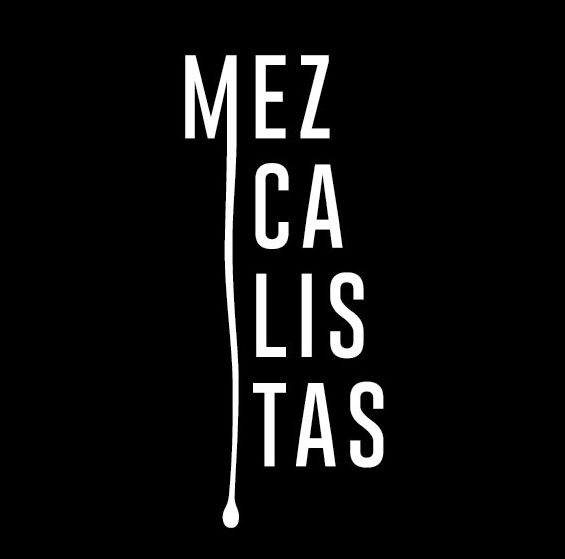
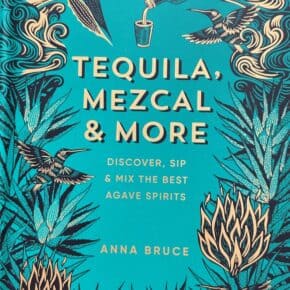
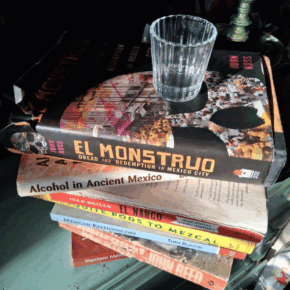
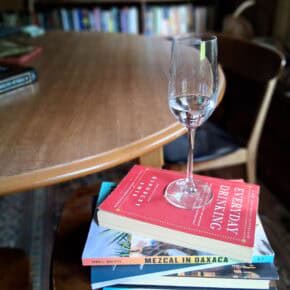
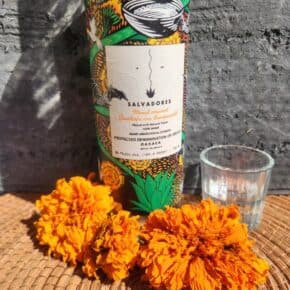
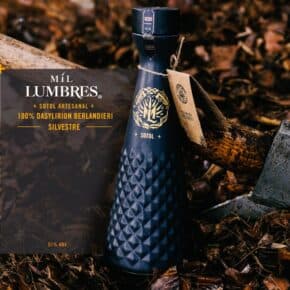
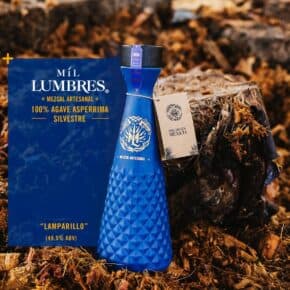

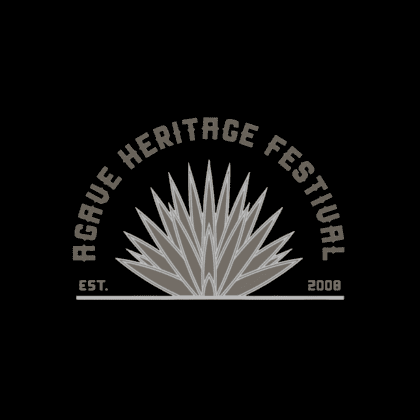



Wow! Such an interesting article. It really makes me want to read these books (one down already) and try a cocktail or two. I’m especially intrigued by Every Day Drinking. Ms. Bowen’s work is exceptional!